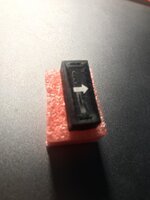Heyo,
I’ve been trying to use my Apple iie as a dumb terminal by following this helpful guide on reddit ( https://www.reddit.com/r/apple2/comments/v6q4ad )
However, it just doesn’t work for me. After the last step to type in the exec::: command, the cursor just blinks and Terminal on my MacBook is unresponsive. I’m using Proterm on my Mac and I even bought the same cable the guy used in the tutorial. Any help?
I’ve been trying to use my Apple iie as a dumb terminal by following this helpful guide on reddit ( https://www.reddit.com/r/apple2/comments/v6q4ad )
However, it just doesn’t work for me. After the last step to type in the exec::: command, the cursor just blinks and Terminal on my MacBook is unresponsive. I’m using Proterm on my Mac and I even bought the same cable the guy used in the tutorial. Any help?


